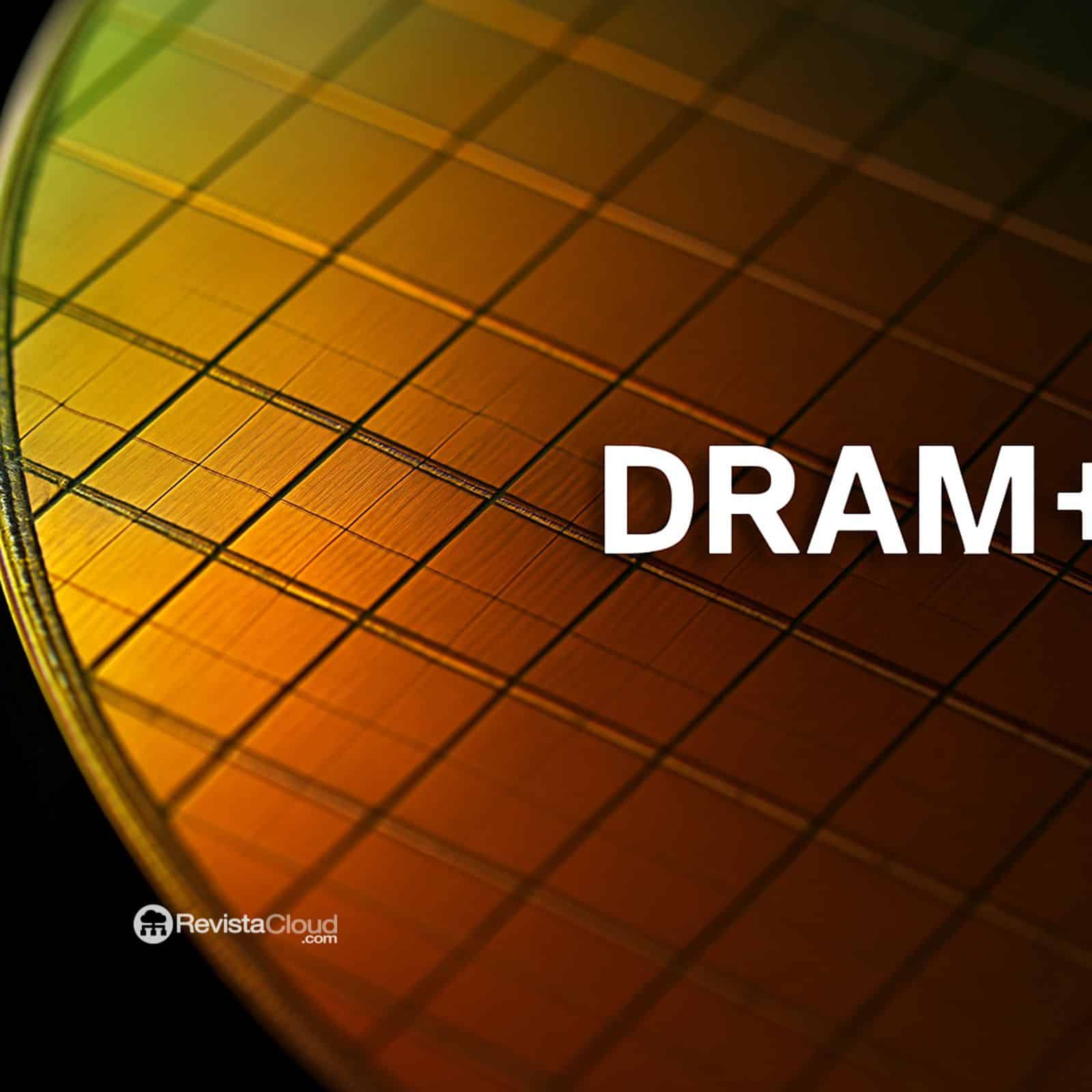The future of dynamic random-access memory (DRAM) is essentially layered. While the tech industry seeks to push beyond traditional scaling limits, European researchers have made a significant breakthrough in epitaxial growth of multi-layers of silicon and silicon-germanium (Si/SiGe), a critical step toward denser, faster, and more efficient 3D memory devices.
Published in Applied Physics in August 2025 by a team led by R. Loo and researchers from Imec, the work reports the controlled fabrication of up to 120 bilayers of Si/Si₀.₈Ge₀.₂ — that is, 241 sublayers — on 300-millimeter wafers. This achievement brings us closer to the reality of 3D stacked DRAM architecture, which is poised to replace the current vertical channels with horizontally stacked structures inspired by the Gate-All-Around concept of MOSFET transistors.
From 2D to 3D: A Paradigm Shift in Memory
For decades, advances in DRAM relied on transistor miniaturization, following Moore’s Law. However, physical and economic limitations are increasingly hindering this path.
The emerging solution is three-dimensional integration: stacking semiconductor material layers in multi-layer structures to increase density without extreme reduction of each cell’s size. In this context, research points toward architectures based on multilayer epitaxial silicon and silicon-germanium, where germanium enables high selectivity during etching processes—crucial for defining memory channels.
The challenge lies in growing dozens or even hundreds of these layers without relaxation caused by internal stresses from lattice mismatch between Si and SiGe, which would lead to crystal defects compromising device reliability.
120 Layer Pairs: A Record in Stability
The study details how, through epitaxial techniques on 300 mm wafers, researchers achieved stacking of up to 120 pairs of 65 nm silicon and 10 nm Si₀.₈Ge₀.₂ layers. Remarkably, the layers remained fully strained without defects detectable in the wafer center.
“Reaching a total accumulation of 1.2 micrometers of Si₀.₈Ge₀.₂ without relaxation is a notable result,” say the authors. To put it in perspective, the total germanium thickness greatly exceeds theoretical and experimental critical relaxation limits for single layers.
The secret was in precise temperature control and the use of high-purity precursor gases, such as dichlorosilane during the SiGe growth process. Additional cleaning techniques were employed to eliminate native oxide and prevent unwanted nucleation.
Edge Border Problems: Lattice Dislocations
Although the wafer core displayed excellent crystal quality, dislocations appeared at the edges — common zones where relaxation is easier due to lower energy barriers.
To mitigate this, researchers explored two strategies:
- Reducing germanium concentration in the SiGe layers.
- Introducing small amounts of carbon into the crystal lattice (co-alloying).
Both approaches decrease lattice mismatch, reducing the likelihood of relaxation. For example, lowering Ge content to about 6.6% enabled the fabrication of multilayers of 30 bilayers entirely free from dislocations across the entire wafer surface.
The Uniformity Challenge
A major hurdle of multilayer epitaxy is vertical and lateral uniformity. While composition was maintained constant, layers tended to vary in thickness as growth progressed, especially in thicker stacks.
The root cause was identified as deposition on the quartz tube of the reactor, which affected heat absorption and hence the growth temperature. These slight temperature variations caused inconsistencies in deposition rates.
Modern equipment allows for temperature control of the quartz tube, significantly improving layer-to-layer uniformity.
Etching Processes and the Germanium Dilemma
Germanium plays a pivotal role: higher Ge concentration improves lateral etching selectivity, enabling precise formation of memory channels within the stack. However, reducing Ge to minimize dislocations hampers etch selectivity, complicating device fabrication.
This presents a technological dilemma: more germanium enhances etch control but increases defect risk; less germanium stabilizes the structure but complicates etching. Incorporating carbon emerges as a promising alternative to balance these factors.
Industry Implications
This progress isn’t merely academic; it has direct implications for future DRAM technology. Projections indicate the industry will transition from vertical to 3D horizontally stacked channel architectures, enabling greater storage density in the same physical space.
Furthermore, these developments align with the demands of data centers and artificial intelligence, where high-performance, low-power memory is essential.
Laboratory Anecdote: When Quartz Dictates Outcomes
A notable aspect of this research is how a seemingly minor factor—material accumulation on the reactor’s quartz walls—significantly impacted wafer quality.
Tiny deposits altered local gas temperatures, influencing growth speed. In a nanometer-scaled industry, controlling such details was vital for achieving stable, uniform layers.
International Race
Developing these techniques isn’t happening in isolation. Major companies like Samsung, SK hynix, and Micron are actively pursuing alternative approaches for future DRAM. The European work from Imec demonstrates that collaboration between public and private research remains critical to maintaining technological competitiveness.
Conclusion
The epitaxial growth of up to 120 Si/SiGe multilayers represents a pivotal milestone in the quest for 3D DRAM memories. Despite ongoing challenges with uniformity and edge dislocation control, the path toward denser, faster, and more efficient memory devices is becoming clearer.
In a world where data multiplies exponentially, these technical breakthroughs form the foundation for the next revolution in computing and artificial intelligence.
FAQs
What is epitaxial growth in semiconductors?
It’s a technique that deposits crystal layers of materials onto a substrate, aligning atoms with the substrate’s lattice to produce high-quality crystalline films.
Why use silicon-germanium in 3D DRAM?
Germanium enables highly selective etching processes crucial for defining precise memory channels within stacked structures.
What was the most significant achievement of this study?
Achieving 120 pairs of Si/SiGe layers without relaxation in 300 mm wafers, surpassing theoretical limits.
What impact will this have on end-users?
It could lead to DRAM with higher capacity, faster speeds, and lower energy consumption—vital for AI, big data, and mobile devices.
Source: pubs.aip.org

